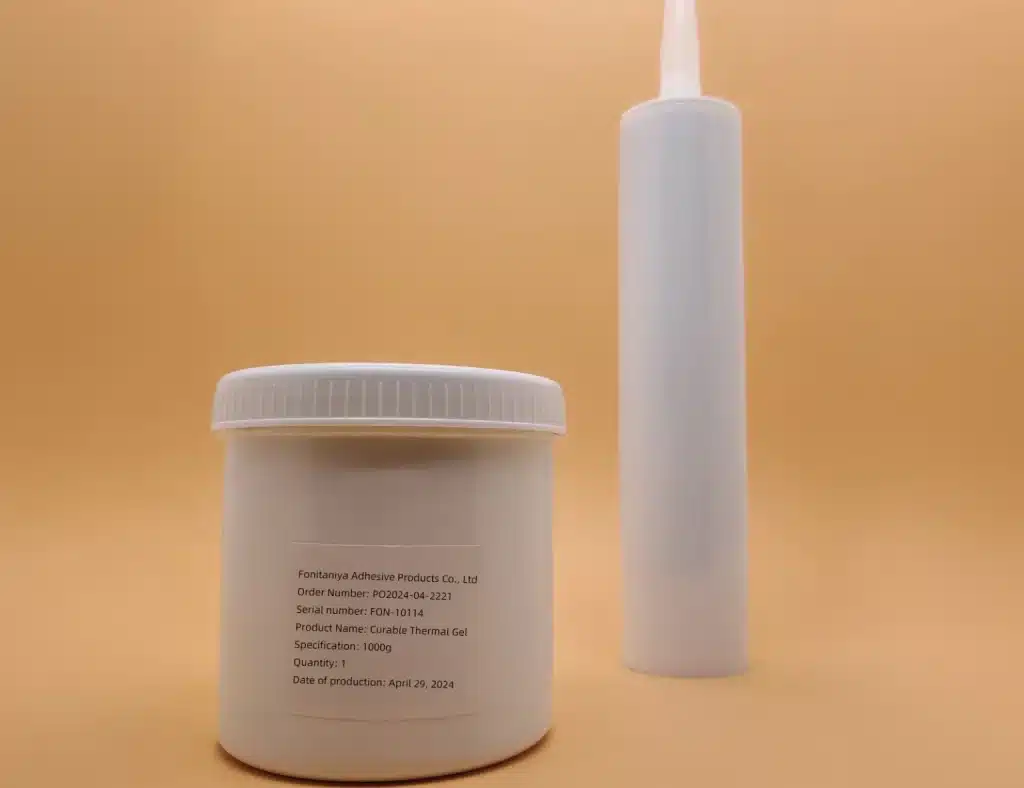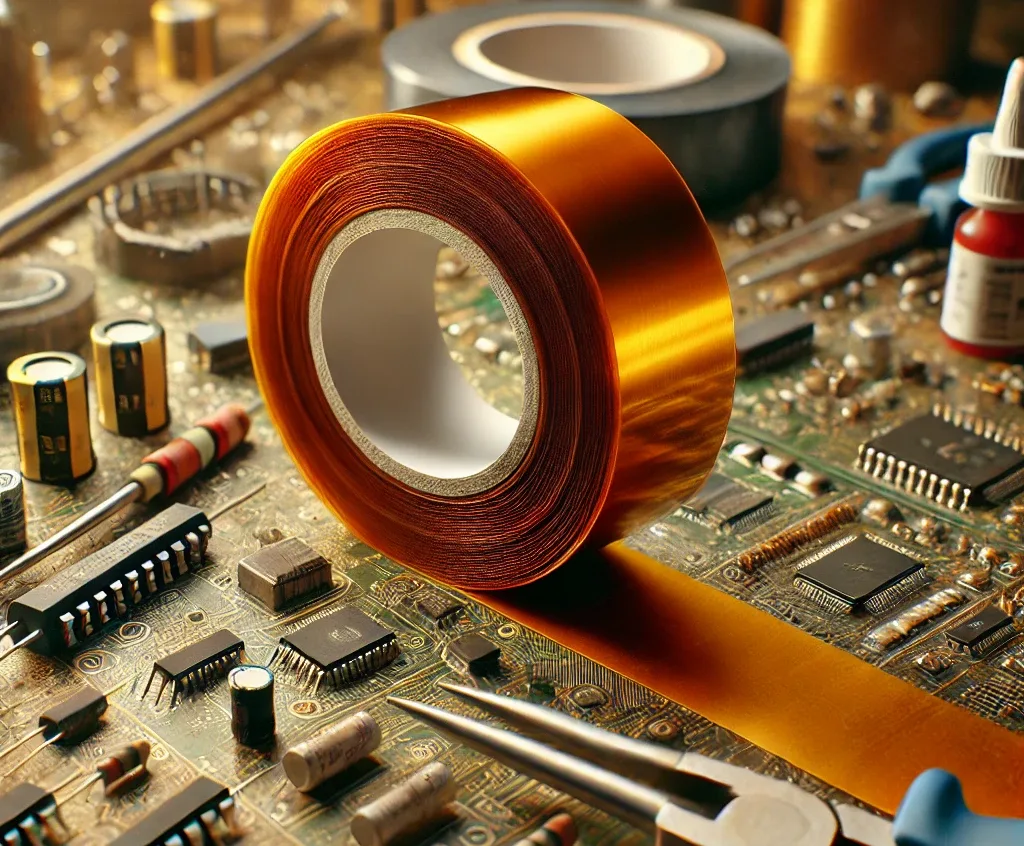Curable Thermal Gel is a single-component thermal interface material engineered for superior heat dissipation in advanced electronics. Designed for both manual and high-volume manufacturing environments, it combines thermal performance with ease of handling and minimal stress on components.
What Is Thermal Gel Used For?
Thermal gel is typically applied between heat-generating components (such as CPUs, power modules, or LEDs) and heat spreaders or heatsinks. With a thermal conductivity of 3.6 W/m·K, it enables efficient heat transfer in:
- High‑performance computing
- Smart devices like smartphones and wearables
- Automotive electronics including ECUs and radar modules
Its low bondline (only 40 µm) ensures tight thermal coupling even in compact assemblies.
How to Remove Thermal Gel?
Removing cured thermal gel is straightforward:
- For room‑temperature cure: gently peel or scrape off and clean with isopropyl alcohol.
- After heat‑accelerated cure: slightly warm the interface to soften the gel and then remove.
- No harsh solvents or mechanical scraping required—as long as removal is done gently.
This contrasts with traditional thermal pastes that may smear or leave residue.

Difference Between Thermal Paste and Gel
Thermal gels and pastes both fill microscopic gaps but differ in several ways:
- Gel cures to a stable film; paste stays soft.
- Gel achieves full cure at room temperature or with mild heat; paste remains viscous.
- Gel maintains consistent thickness (≈ 40 µm); paste may spread unevenly.
- Gel reduces stress and migration; paste may bleed under heat or vibration.
Can Thermal Paste Be Used Instead of Thermal Gel?
While thermal paste can serve in less demanding designs, it isn’t ideal for many modern systems:
- It lacks structural curing—leading to pump‑out or drift over time.
- It often fails in rugged environments like automotive or compact consumer electronics.
- Gel delivers more predictable performance, especially in high‑temperature or long-lifetime applications.
Hence, for demanding or precision thermal management, thermal gel is preferred.
Key Features of Fonitaniya Curable Thermal Gel
This product blends performance and flexibility:
- High thermal conductivity of 3.6 W/m·K
- Ultra-thin bondline (~40 µm) optimized for minimal thermal resistance
- Curing options: room-temperature or heat-accelerated
- Wide operating range: –45 °C to 200 °C (–49 °F to 392 °F)
- Excellent conformability: accommodates surface variation without stress
Technical Properties and Performance
- Easy to dispense or screen print
- Suitable for complex geometries or high-density packages
- Defines stable thermal interface over hours/weeks with no flow
- Durable under vibration, thermal cycling, and mechanical assembly
Benefits for High‑Performance Systems
- Stress relief: soft gel reduces mechanical mismatch
- Efficient heat path: cured gel maintains consistent coverage
- Assembly reliability: no shifting during reflow or vibration
- High yield: minimal cleanup and post‑assembly rework
Application Examples
Common uses include:
- Smart devices: CPU to copper spreader
- Automotive systems: Module to heatsink interfaces
- 5G infrastructure: RF module thermal management
- Industrial computing: high-density server components
Comparison: Curable Thermal Gel vs. Traditional Thermal Paste
| Feature | Curable Thermal Gel | Traditional Thermal Paste |
|---|---|---|
| Thermal Conductivity | 3.6 W/m·K | 1–2 W/m·K |
| Bondline Thickness | ~40 µm, cured film | Variable, often thicker |
| Stability Over Time | Excellent | May migrate or dry out |
| Component Stress | Low | Higher |
| Cleanup Required | Minimal | May smear or require solvent |
| Suitability | Smart devices, automotive, HPC | Basic consumer electronics |
FAQs About Thermal Gel
Q: What is thermal gel used for?
A: For heat dissipation between chips and heatsinks or spreaders in high-performance electronics.
Q: How do I remove thermal gel?
A: Peel gently or heat to soften after cure, then clean with isopropyl alcohol.
Q: What is the difference between thermal paste and gel?
A: Gel cures into a stable film at a defined thickness; paste stays viscous and may shift. Gel also offers better performance.
Q: Can I use thermal paste instead of gel?
A: Only in low-stress or less demanding environments. For high-reliability or compact systems, gel is preferred.
Q: Does thermal gel support automotive temperature ranges?
A: Yes, it functions between –45 °C and 200 °C.
Q: Is it RoHS compliant?
A: High-quality formulations typically meet RoHS and similar regulatory standards.
Conclusion: Why Thermal Gel Is Next‑Gen Heat Interface Material
Thermal interface materials need to deliver predictable, stable, and efficient thermal performance in modern devices. Curable Thermal Gel achieves this through high conductivity, low thickness, and flexible curing options—making it a superior choice over traditional paste in many applications.
For manufacturers who demand both reliability and thermal efficiency, Fonitaniya offers this advanced thermal interface solution tailored for smart devices, automotive systems, and high-performance electronics.




